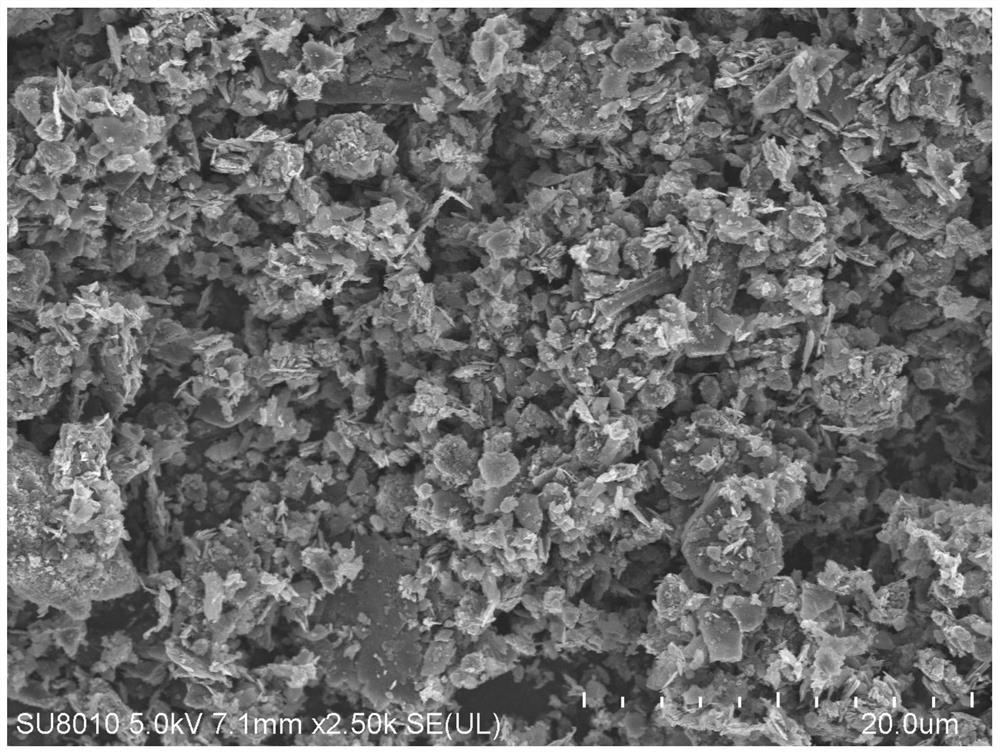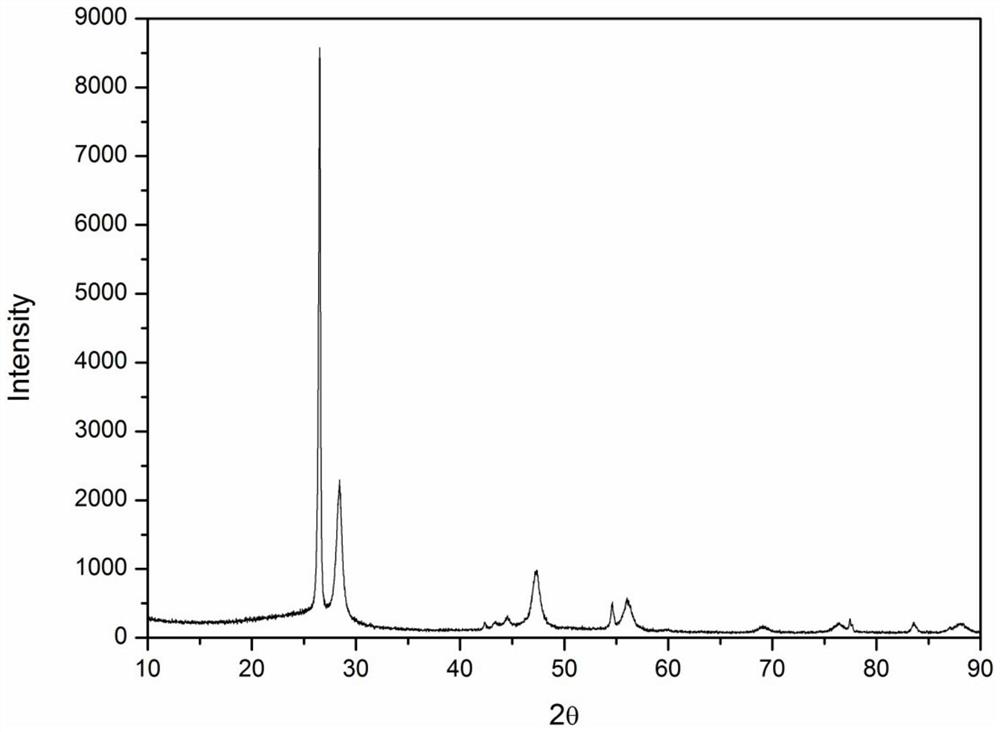Negative electrode material for lithium batteries and preparation method thereof
A negative electrode material, lithium battery technology, applied in battery electrodes, negative electrodes, secondary batteries, etc., can solve the problems of battery production and processing, hindered ion transport, structural damage of negative electrode materials, etc., to achieve excellent electrochemical performance and stable cycle. Good performance and high specific capacity
- Summary
- Abstract
- Description
- Claims
- Application Information
AI Technical Summary
Problems solved by technology
Method used
Image
Examples
Embodiment 1
[0033] 1) Use 30-40μm massive oil-based needle coke as the graphite raw material, after being crushed by a crusher, grind for 1 hour with a ball mill to obtain a particle size D 50 Needle coke with small particles of 800nm, and then subjected to high-temperature graphitization treatment in a high-temperature graphitization furnace at 2600°C for 45 minutes to obtain highly graphitized artificial graphite.
[0034] 2) Put 5 μm bulk micron silicon powder in a sand mill, use isopropanol as a dispersant, and grind for 3 hours with a vertical closed sand mill to obtain a uniform dispersion with a particle size of D 50 It is 80nm amorphous nano-silicon dispersion liquid, wherein the selected grinding medium is zirconium dioxide, the ball diameter is 0.08mm, and then dried in nitrogen atmosphere to obtain amorphous nano-silicon powder.
[0035] 3) Mix the obtained artificial graphite and amorphous nano-silicon powder according to a mass ratio of 5:1, and ball mill for 30 minutes at a ...
Embodiment 2
[0040] 1), 60-80μm massive coal-based needle coke is used as graphite raw material, after being crushed by a crusher, it is ground by a ball mill for 2 hours to obtain a particle size D 50 Needle coke with small particles of 1 μm, and then high-temperature graphitization treatment in a high-temperature graphitization furnace at 2800 ° C for 1 hour to obtain highly graphitized artificial graphite.
[0041] 2) Put 10 μm bulk micron silicon powder in a sand mill, use propanol as a dispersant, and grind for 5 hours with a horizontal non-screen sand mill to obtain a uniform dispersion with a particle size of D 50It is a 50nm amorphous nano-silicon dispersion, wherein the selected grinding medium is zirconium dioxide with a ball diameter of 0.1mm, and then dried in a nitrogen atmosphere to obtain an amorphous nano-silicon powder.
[0042] 3), the obtained artificial graphite and amorphous nano-silicon powder are mixed according to the mass ratio of 8:1, ball milled at 100 rpm / min fo...
Embodiment 3
[0047] 1) Take 100-120μm lump coal-based and oil-based needle coke, wherein the mass ratio of coal-based and oil-based needle coke is 1:1, as graphite raw material, crushed by a crusher, and then ground for 10 hours with a ball mill , to get the particle size D 50 Needle coke with small particles of 600nm, and then high-temperature graphitization treatment in a high-temperature graphitization furnace at 3100°C for 75 minutes to obtain highly graphitized artificial graphite.
[0048] 2) Put the massive micro-silica powder in a sand mill, use isopropanol as a dispersant, and grind it with a horizontal non-screen sand mill for 5 hours to obtain a uniform dispersion with a particle size of D 50 It is a 100nm amorphous nano-silicon dispersion, wherein the selected grinding medium is zirconium dioxide with a ball diameter of 0.05mm, and then dried in a nitrogen atmosphere to obtain amorphous nano-silicon powder.
[0049] 3), the obtained artificial graphite and amorphous nano-silic...
PUM
| Property | Measurement | Unit |
|---|---|---|
| particle diameter | aaaaa | aaaaa |
| particle diameter | aaaaa | aaaaa |
| particle diameter | aaaaa | aaaaa |
Abstract
Description
Claims
Application Information
 Login to View More
Login to View More - R&D
- Intellectual Property
- Life Sciences
- Materials
- Tech Scout
- Unparalleled Data Quality
- Higher Quality Content
- 60% Fewer Hallucinations
Browse by: Latest US Patents, China's latest patents, Technical Efficacy Thesaurus, Application Domain, Technology Topic, Popular Technical Reports.
© 2025 PatSnap. All rights reserved.Legal|Privacy policy|Modern Slavery Act Transparency Statement|Sitemap|About US| Contact US: help@patsnap.com



